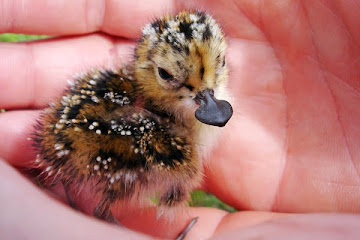 |
| Atlantic Cod |
English version
A recent study by the German Center for Integrative Biodiversity Research (iDiv) Halle-Jena-Leipzig has discovered that the increase in global temperature affects fish in a very negative way.
The researchers analysed ten years of data about the stomach contents of six commercially important fish species with different feeding strategies in the Bay of Kiel. For example, flatfish, like the European flounder (Platichthys flesus), tend to be sit-and-wait predators, whereas Atlantic Cod (Gadus morhua) are more actively foraging feeders.
Due to rising temperatures caused by Climate Change, fish are feeding on large numbers of small prey to meet their immediate energy needs. This happens, among other reasons, due to over exploitation of fisheries, which makes large prey that provide more energy become scarce and fish have to feed on a large amount of small available preys, which allows them to satisfy their daily energy needs but not their medium or long-term needs.
The effects of these changes in feeding have been analyzed with mathematical models and the results indicate these new foraging behaviors could accelerate the extinction of many fish species.
 |
| Platichthys flesus |
Spanish version
Un estudio reciente del Centro Alemán para la Investigación Integrativa de la Biodiversidad (iDiv) Halle-Jena-Leipzig ha descubierto que el aumento de la temperatura global afecta a los peces de forma muy negativa.
Los investigadores analizaron diez años de datos sobre el contenido estomacal de seis especies de peces comercialmente importantes con diferentes estrategias de alimentación en la Bahía de Kiel. Por ejemplo, los peces planos, como la platija europea (Platichthys flesus), tienden a ser depredadores que se quedan quietos y esperan a sus presas, mientras que el bacalao del Atlántico (Gadus morhua) se alimenta más activamente.
Debido al aumento de las temperaturas provocado por el cambio climático, los peces se alimentan de una gran cantidad de presas pequeñas para satisfacer sus necesidades energéticas inmediatas. Esto sucede, entre otras razones, por la sobreexplotación de las pesquerías, que hace que las presas grandes que les proveen de mayor cantidad de energía escaseen y los peces tengan que alimentarse de una gran cantidad de presas pequeñas disponibles, lo que les permite satisfacer sus necesidades energéticas diarias pero no sus necesidades a mediano y largo plazo.
Los efectos de estos cambios en la alimentación se han analizado con modelos matemáticos y los resultados indican que estos nuevos comportamientos de alimentación podrían acelerar la extinción de muchas especies de peces.
Source: Fuente: sciencedaily.com











